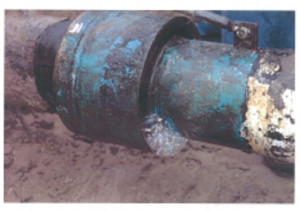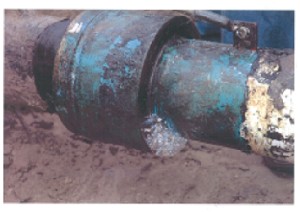Fire broke out along a “transition corridor” combining several underground pipelines transporting hazardous substances, including hydrogen, kerosene and ethylene oxide. The fire was brought under control within a few minutes thanks to the limited size of the leak. Though no noteworthy consequences were observed, the incident was still taken seriously, given the presence of other pipes merged into the same corridor, some of which were transporting toxic gases.
According to the appropriate inspectorate, a hydrogen (H2) leak on an underground pipeline had been ignited by welding work performed nearby. Differential ground settlement with local deformation of the pipeline at the level of a cathodic protection system had caused the H2 leak. The type of ground (i.e. sandy soil) facilitated this settlement due to the presence of heavy equipment on the ground surface (e.g. drainage pump, construction vehicles) used for earthworks conducted to lay a new kerosene pipe.
Although the transport of hazardous substances via this transition corridor was being managed according to a procedure considered secure, a number of deficiencies were nonetheless identified; design calculations were thus required with respect to the acceptable load limits above such pipe clusters. In addition, a more active pipe monitoring programme was recommended.
Download the detailed report in .pdf format (169 Kb)





